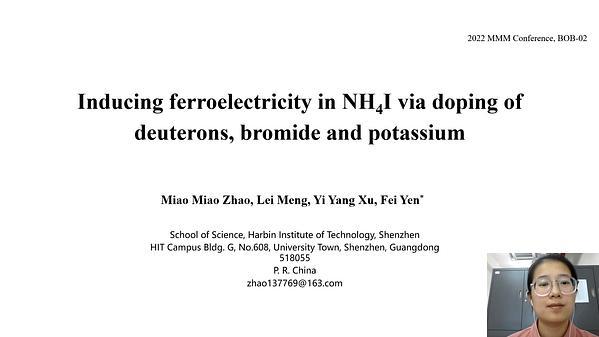Would you like to see your presentation here, made available to a global audience of researchers?
Add your own presentation or have us affordably record your next conference.
Arrays of magnetic nanowires (NWs) are an attractive platform with tremendous potential for developing novel magnetic applications, e.g., next-generation information technologies or sensors 1. The synthesis of NWs by electrochemistry shows multiple degrees of freedom allowing for tailoring the composition, crystallographic structure and, consequently, magnetic properties 2,3.
Herein, FeNi NWs were grown by electrodeposition into anodized aluminum oxide (AAO) membranes (Fig. 1a). The broad range of electrolytes and voltages used, allowed us to study the anomalous FeNi co-deposition by a compositional analysis, being explained within a modified Bocris-Drazic-Despic (BDD) model 4. X-ray diffraction patterns showed a change from bcc crystallographic structure for Fe-rich NWs to fcc structure at mid and low Fe content, with biphasic bcc-fcc phase for equiatomic NWs.
Tuning the synthesis conditions led to FeNi NWs with a range of magnetic hardness, observing an increase in coercivity (from 0.2 kOe to 1 kOe) for a decreased Fe content (Fig. 1b). Coercivity angular measurements showed that the magnetization reversal is dominated by transverse domain wall reversal and indicated a decrease in magnetostatic interactions among NWs as the source of the coercivity rise. First-order reversal curves (FORCs) highlighted the limited role of the magnetic interactions in the arrays, except for Fe0.80Ni0.20 NWs which showed a FORC diagram for magnetically interacting NWs (Fig. 1c). This study shows how the magnetic properties of the NWs can be tailored through an optimized control of the synthesis conditions and adapted to the requirements of the final application.
Fig. 1: (a) SEM image of NWs grown inside the AAO template, (b) Hysteresis loops for FeNi NWs with different compositions, and (c) FORC diagram for Fe0.80Ni0.20 NWs.
Acknowledgements
Authors acknowledge support from EU M-ERA.NET and MICINN through COSMAG (PCI2020-112143) and NEXUS (PID2020-11521RB-C21). A.J.C.-H. and E.M.P. acknowledge support from "La Caixa†Foundation (ID 100010434) through the Doctoral INPhINIT Incoming program (LCF/BQ/DI20/1178002) and AEI (JdC-I program, IJC2020-043011-I/MCIN/AEI/10.13039/501100011033) and EU by NextGenerationEU/PRTR, respectively.
